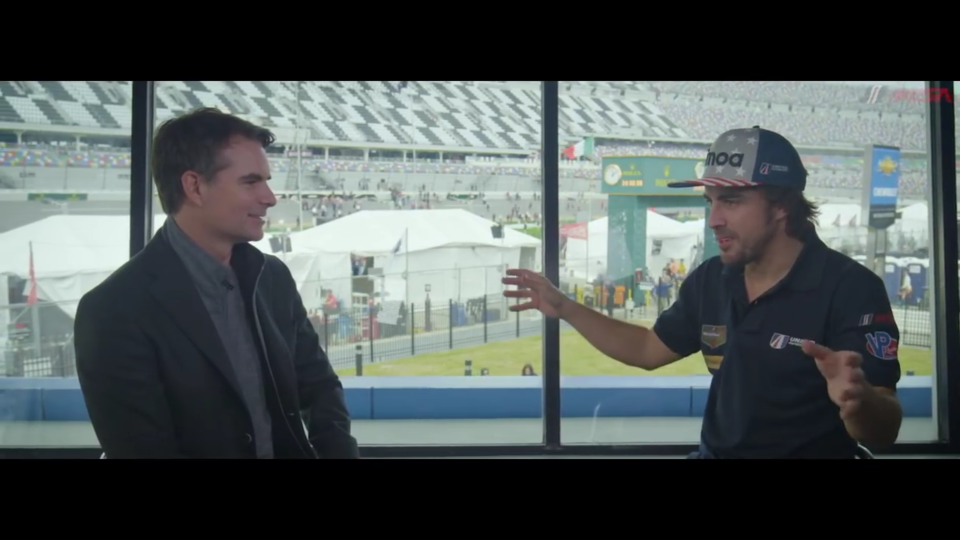Earlier this year, Formula 1 superstar Fernando Alonso joined the small group of drivers with F1 experience making the trip to Florida to compete at the 24 Hours of Daytona.
For many, the opportunity to race at the prestigious 24 Hours of Daytona is something that tops their racing resume, but the likes of Alonso seldom make it to such events in this day and age. However, nearing the end of his Formula 1 career and frustrated with the situation at McLaren-Renault, he’s been branching outside of the rarefied air of F1 and experiencing what else the world of motorsport has to offer.
You could attribute his flighty nature of late to the lack of competitive machinery he’s had in F1, but truly, Alonso’s an old-school racer who’s curious, confident, versatile, and fast in just about anything. As Jeff Gordon discovers here, Alonso has set his eyes on a few other big races — namely the 24 Hours of Le Mans — which he prepared for with this appearance at the famed speedway.
Even a two-time F1 World Champion can learn a thing or two when jumping into a completely new category with different cars and different rules. With a degree of humility and a thirst for understanding the new challenges at his feet, getting to grips with the Ligier JS P217 was not a major obstacle (though Alonso had never truly competed in a closed-top car before), nor was the issue of sharing a car with other drivers. Limited visibility and added weight were easily surmounted hurdles, but the task of managing traffic, at night, with a wide variety of cars and classes took the most concentration. Fortunately, he didn’t have to concern himself with energy harvesting, DRS, or any of the other complexities of Formula 1.
Alonso has the odd mixture of confidence and humility to excel in a new domain, which is why he was a contender at the Indy 500, and was quite competitive at the 24 Hours of Daytona until mechanical gremlins ruined his chances.
Despite his experience at the top of the racing ladder, a new category, a new car, and a new track all require experience that even he lacked, and as such, he was realistic about his chances. He started in 13th and worked his way as up to 10th within the first several hours. Even after dealing with tire problems, which temporarily dropped Alonso to 11th, he reclaimed ground and moved into 6th. After 10 hours and 20 minutes of racing, Alonso’s brakes gave up the ghost and ruined his chances of an admirable finish. While coming in 20th wasn’t his idea of a successful race, the experience opened his eyes to the specific challenges of sports car racing, and showed us how he has the wisdom to recognize the value of experience, the mindset to excel in new environments, and the contract to go where he pleases.























